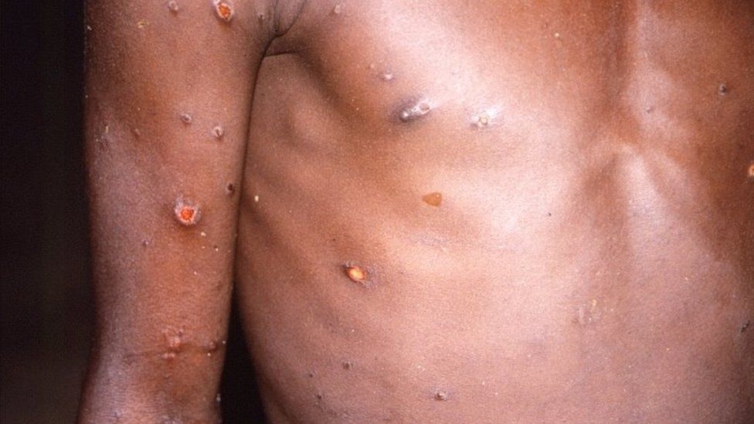The Ghana Health Service (GHS) has significantly ramped up its surveillance and emergency response systems to swiftly detect any potential cases of Mpox, following a surge of the disease within the sub-region. This comes after the African Centre for Disease Control and Prevention (Africa CDC) declared Mpox a “public health emergency” of security concern earlier this week.

As Mpox becomes a growing concern, Myjoyonline.com explores critical facts that will help you stay safe and informed:
1. Origin of Mpox
Mpox, previously known as Monkeypox, was initially identified in animals at the State Serum Institute in Copenhagen, Denmark, in 1958. It was discovered during an investigation of a pox-like disease spreading among monkeys, which gave the virus its original name.
Human cases of Mpox were first identified in 1970 in Zaire (now the Democratic Republic of Congo) in a 9-year-old boy. Notably, the outbreak occurred in a region where smallpox had been eradicated in 1968. This marked the virus’s initial crossover into the human population.
2. Mpox Spread to the U.S.
In 2003, Mpox made its first appearance outside of Africa, specifically in the Midwestern United States. This marked a historic point as it was the first time Mpox had been confirmed outside of the African continent. Most of the infected patients had come into contact with pet prairie dogs that had been exposed to the virus. This incident highlighted the zoonotic nature of the disease, showing its ability to cross species from animals to humans.
3. How Mpox is Transmitted
Transmission of Mpox occurs primarily through direct contact with the blood, body fluids, or mucosal lesions of infected animals. Human-to-human transmission has also been documented through close contact with infected animals, primarily during the handling of monkeys, rats, and squirrels. These animals serve as the main reservoirs of the virus. Zoonotic transmission is an area of significant concern, particularly in regions with frequent human-animal interaction.

4. Symptoms of Mpox
Mpox presents with symptoms that are often similar to but less severe than smallpox. The typical incubation period ranges from 6 to 13 days, though it can extend from 5 to 21 days. Initial symptoms include fever, intense headaches, lymphadenopathy (swelling of the lymph nodes), back pain, muscle aches, and a notable lack of energy.
Within 1 to 3 days of the fever, patients often develop a rash, beginning on the face before spreading to other parts of the body. The rash tends to progress through various stages—from macules (flat lesions) to papules (raised bumps), vesicles (fluid-filled bumps), pustules (pus-filled lesions), and scabs. Once the scabs fall off, individuals are considered no longer infectious.
5. The Severity of Mpox
Mpox is typically a self-limiting illness, meaning most cases resolve on their own with proper care. However, the severity can vary greatly, with more severe cases reported in young children and individuals with compromised immune systems. The fatality rate for Mpox has varied between outbreaks, but it typically ranges from 1% to 10%.
6. Prevention of Mpox
Preventing Mpox starts with minimizing contact with animals, particularly those in regions where the virus is prevalent. This includes avoiding the handling of dead animals, ensuring the safe preparation of meat, and maintaining good hygiene. For those working in high-risk environments, such as healthcare settings or animal control, using personal protective equipment (PPE) and following sanitation protocols is essential.
7. Vaccine Availability
Vaccination against smallpox has been shown to provide cross-protection against Mpox, though widespread vaccination for Mpox is not typically available. However, countries with confirmed outbreaks may consider vaccination campaigns for high-risk populations, such as healthcare workers or individuals in contact with confirmed cases. Research continues into specific Mpox vaccines.

8. Mpox Treatment
There is no specific treatment for Mpox, though antiviral drugs developed for smallpox may be used in severe cases under the guidance of a healthcare professional. Treatment is generally supportive, focusing on alleviating symptoms and managing complications like bacterial infections or dehydration.
9. Mpox in Africa and Beyond
Mpox remains endemic to several African countries, including the Democratic Republic of Congo, Nigeria, and Central African Republic. In recent years, cases have been increasingly reported outside of Africa, raising concerns over global health security. Surveillance efforts by organizations like the Africa CDC aim to track and contain the spread, with international cooperation essential to controlling outbreaks.
Mpox continues to be a public health concern, but with appropriate knowledge, vigilance, and health measures, its spread can be curtailed. Stay safe, stay informed, and follow guidelines issued by local and international health authorities.



